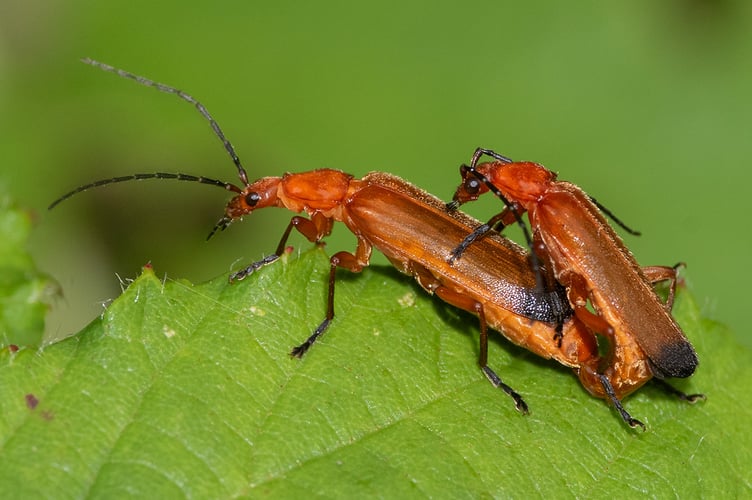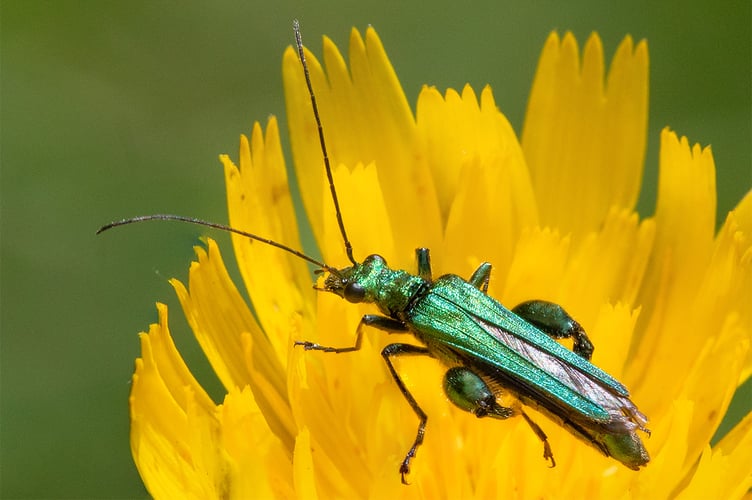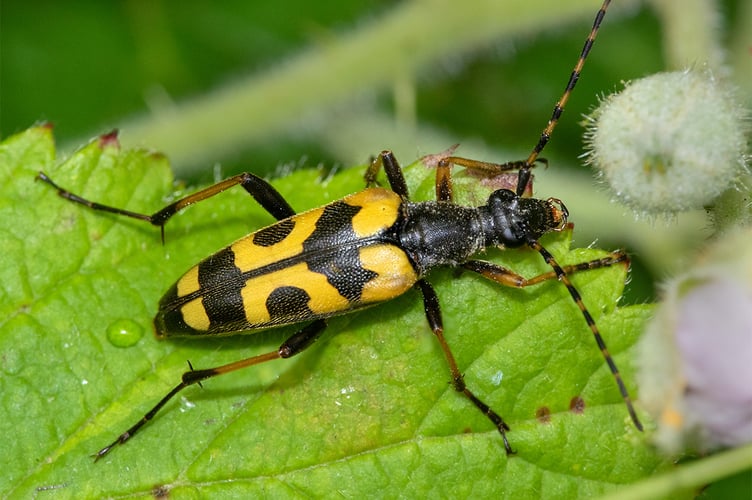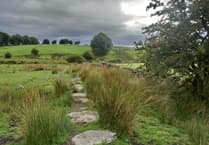



I find beetles with over 4,000 UK species, plus about 600 species of Weevils, to be one of the most challenging insect groups to identify. They are placed under the general title of Coleoptera which means sheath-winged and refers to their hardened wing covers called elytra. They range from about 75 mm down to tiny creatures less than 1 mm in length. Their diets are extremely varied including other insects and plants, including wood and dung. Some are serious house and garden pests while others such as the Ladybirds can be beneficial. They begin their life cycle as eggs which hatch into larvae then finally pupate into the adult stage. Most beetles live on the ground or on plant leaves but there are also water living species. Most diving beetles come to the surface to obtain a fresh supply of air although a few small beetles are able to absorb oxygen from water. Although many beetles can be difficult to identify I find a few are reasonably obvious, particularly the Longhorn Beetles (Cerambycidae). Black and Yellow Longhorn Beetle (Rutpela maculata) are a widespread summertime insect. They should be simple to identify although there are a few rather similar less common species such as the Speckled Longhorn Beetle. Wasp Beetles (Clytus arietis) with their black and yellow markings are another easy to identify summer beetle. Some of the Cantharidae group can frequently be discovered sitting on foliage, particularly Common Red Soldier Beetles and mating pairs are often seen. Various species of the Cantharis family should be easy to find and are usually identifiable from good quality photographs or examination with a hand lens but they can be variable and there are several similar species so care is required. Swollen-thighed Beetles are another common summer beetle which should be easy to find feeding on flower pollen. But only the males have those swollen thighs. Leaf Beetles (Chrysomelidae) with over 270 species are a difficult group which contains many colourful beetles including a wide range of small shiny species. Most require microscopic examination for identification. However, there are a few species which can easily be identified, such as Bloody-nosed Beetles (Timarch tenebricosa) which can be as large as 20 mm and have a distinctive rather rounded shape. The Ground Beetle group, with over 300 species, is large and complex. It contains many hard to identify species and are often plain looking blackish beetles which appear similar to other families such as Burying Beetles, Dor Beetles and Scarab Beetles. They can often be found charging along like indestructible miniature tanks. Identification to species level is a complicated job which usually requires detailed examination with a microscope so, apart from a few obvious exceptions, I tend to avoid many beetle groups. An additional problem with identification is that there has recently been several name changes. Until recently identification relied on a book from the 1930s. However, if anybody is looking for a challenge and has plenty of spare time there are now good publications and identification keys available. As a starting point, there is a guide to beetle families produced by the Field Studies Council under their Aidgap series and there are several specialist websites. Mike Hackston has produced some PDF keys which can be downloaded. Alternatively, you can forget about identification and simply appreciate beetles as colourful insects which can be found in gardens and the wider countryside.




